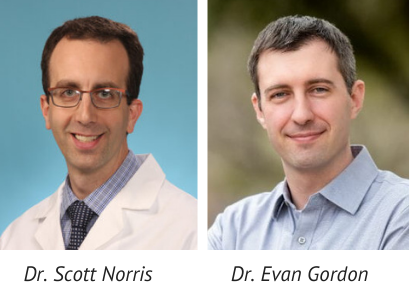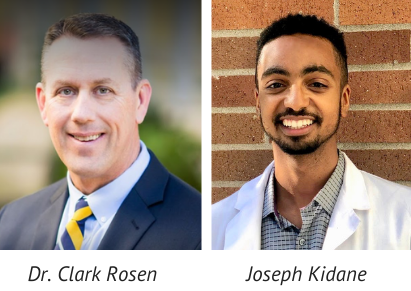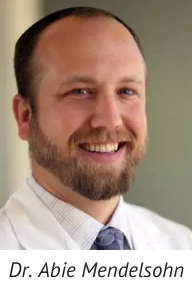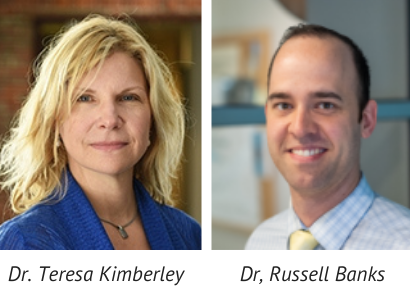Thanks to the generous support of our community — in the past 10 months — the National Spasmodic Dysphonia Association (NSDA) has funded four research grants totally almost $200,000. These grants focus on possible new treatments, improved diagnostic tools, and identification of areas of the brain impacted by spasmodic dysphonia.
Our expanded grant program is focused on advancing our understanding of SD and related voice conditions. We offer a rolling deadline so grants may be submitted year-round. We have increased our funding cap for basic research from $50,000 to $75,000. These important research grants have been made possible by the success of our 2021 Walk for Talk fundraising event. Funding more research means giving our community more hope that someday, there will be more effective treatments, and possibly a cure.
BRAIN CONNECTIVITY MAPPING STUDY
Individual-Specific Brain Functional Connectivity Mapping of Therapeutic Response in Spasmodic Dysphonia, a form of Laryngeal Dystonia

Scott Norris, MD and Evan Gordon, MD (Washington University) are examining whether dysfunctional individual brain networks are modified by Botox® treatments for adductor spasmodic dysphonia (AdSD). The investigators will use advanced magnetic resonance imaging (MRI) to measure and compare brain activity in subjects before and after successful Botox injections. For each subject, the team will determine whether voice-related brain regions communicate differently following successful treatment with Botox®.
This unique approach, testing for treatment-related changes in brain activity within each individual patient, is a critical improvement over previous studies that averaged data across groups. This study may enable improvements in diagnosis, participant selection for studies or treatment application, and in predictions of treatment response for individuals with SD.
SD contributes to disability via abnormal, involuntary contraction of muscles controlling the voice. While Botox® targets muscles, evidence suggests that SD results from disordered brain signaling. This study aims to contribute to groundwork in the development of treatments that target disordered brain signaling. Future promising treatments might include transcranial magnetic stimulation, deep brain stimulation, or novel medications.
Dr. Norris and Dr. Gordon expect to find an impact. Dr. Norris said, “(We will test) our hypothesis while offering additional proof of concept applications to scale potential multi-institutional collaborative studies bridging individual functional maps to therapeutic interventions, for instance. This particular line of research potentially has great importance to identify new targets for therapeutic interventions and metrics of target engagement for people with spasmodic dysphonia and possibly other forms of dystonia.”
DIAGNOSTIC TOOLS
Assessing Laryngopharyngeal Sensation in Patients with Adductor Spasmodic Dysphonia Using a Novel Tactile Buckle Aesthesimeter

Clark Rosen, MD (University of California, San Francisco) will explore a possible new diagnostic tool that may help us better understand the how the vocal folds respond to stimuli in spasmodic dysphonia (SD). In addition, there is a training component for Joseph Kidane, a fourth-year medical student who is pursuing a dedicated research career in laryngology. Dr. Rosen will serve as his mentor and Joseph will aid in the execution of the research study.
Dr. Rosen shared, “… There currently does not exist blood or imaging tests that can diagnose SD. One of the mechanistic theories of SD is that the larynx, or voice box, is in a hyper-sensitized state where the vocal folds contract to stimuli that would not otherwise evoke a response in a healthy state. However, direct testing has not been formally tested before. Our research team has developed a novel, validated device to deliver consistent stimuli to different sites of the larynx. This device consists of a video laryngoscope and a “Cheung-Bearelly” microfilament that is passed through a channel in the laryngoscope. With this device we can visualize and record the larynx, evaluate laryngeal sensation, and see if the vocal folds close in response to the stimuli. We can assess sensation in the larynx with different monofilament sizes delivering varied strength.”
He continued, “In our study, we will determine if there is a difference in the vocal fold closure between those living with SD and those without by testing three different sites within the voice box: the lateral pyriform sinus, aryepiglottic fold, and false vocal fold. The monofilament size will be increased to strengthen the force of delivered stimuli to help approximate the threshold values for vocal fold closure in people with SD. In addition, we will ask participants to rate their perceived strength of stimuli with each tap on a scale from 1 – 10, comparing it between the two groups. Lastly, we will also explore associations of laryngeal response with cough/gag reflex, a patient-reported outcome measure, and patient comfort level. We hope these findings contribute to our understanding of the physiological underpinnings of spasmodic dysphonia and aid in the development of diagnostic tools.”
Development of a Computerized, Video-Based Measure of Severity for Laryngeal Dystonia

Abie H. Mendelsohn, MD (University of California, Los Angeles) is developing an advanced computer-based program to create objective measurements for outcomes of treatment. To date, the research community has been unable to establish a quantitative scale of the severity and manifestations of SD. This shortcoming has impacted researcher’s ability to measure treatment outcomes in clinical trials. Video recordings and audio perceptual analysis of previously recorded standardized patient examinations will be compared. The computer-based learning network will be trained by inputting expert analysis of laryngeal video and audio recordings.” This grant augments the Dystonia Coalition’s project led by Dr. David Peterson on objective measures.
NEW TREATMENTS
Novel Application of rTMS in Abductor Laryngeal Dystonia

Teresa Kimberley, PhD and Russell Banks, PhD, CCC-SLP (Massachusetts General Hospital (MGH) Institute of Health Professions) are investigating the effects of repetitive transcranial magnetic brain stimulation devices (rTMS) on individuals with abductor SD. Prior research by this team has demonstrated improvement with this treatment on individuals with adductor SD. The study is designed to better understand how the brain activates vocal cords during phonation, and to examine the possible benefit of non-invasive brain stimulation. Prior investigations have uncovered both brain organization and connection differences in certain brain regions among people with AbSD. Speech is neuromodulated by cortical inhibition and excitement of signals to the laryngeal muscles. Dr. Kimberley shared, “We anticipate finding a decreased cortical inhibition in individuals with AbSD similar to what we found in individuals with the adductor form of SD.” To address gaps in knowledge, this pilot study will use functional magnetic resonance imaging (fMRI) to better understand brain function, including cortical inhibition. In addition, the study will apply five consecutive days of repetitive transcranial magnetic stimulation (rTMS), a safe, non-invasive neuromodulation technique to the left side of the brain to study participants. The objective is to determine if the rTMS treatment will reduce inhibition and thereby improve vocal function. According to Dr. Kimberley, if successful, this application might lead to an improvement, not a cure, in voice. This might translate to the need for less frequent and/or lower doses of Botox® treatments.


